Joshua Tree National Park isn’t just home to those bizarre-looking trees scattered across the desert—it’s actually one of the most welcoming rock climbing destinations for beginners anywhere. The granite formations here serve up everything from gentle scrambles to serious multi-pitch adventures, though newcomers will find plenty to keep them busy without stepping into expert territory. Rock quality? Fantastic. Weather? Generally cooperative. Approaches? Short enough that you won’t be trudging through sand for hours just to reach your climb.
What really sets Joshua Tree apart for new climbers is the incredible variety of styles available within such a compact area. You can work on crack technique, practice face climbing, and even dabble in basic multi-pitch skills—all without driving to different crags. The desert setting means clear skies and comfortable temperatures during prime climbing seasons, though summer can be brutally hot.
Here is a list of 15 Joshua Tree climbing routes that’ll help first-timers build skills while having a blast.
White Lightning
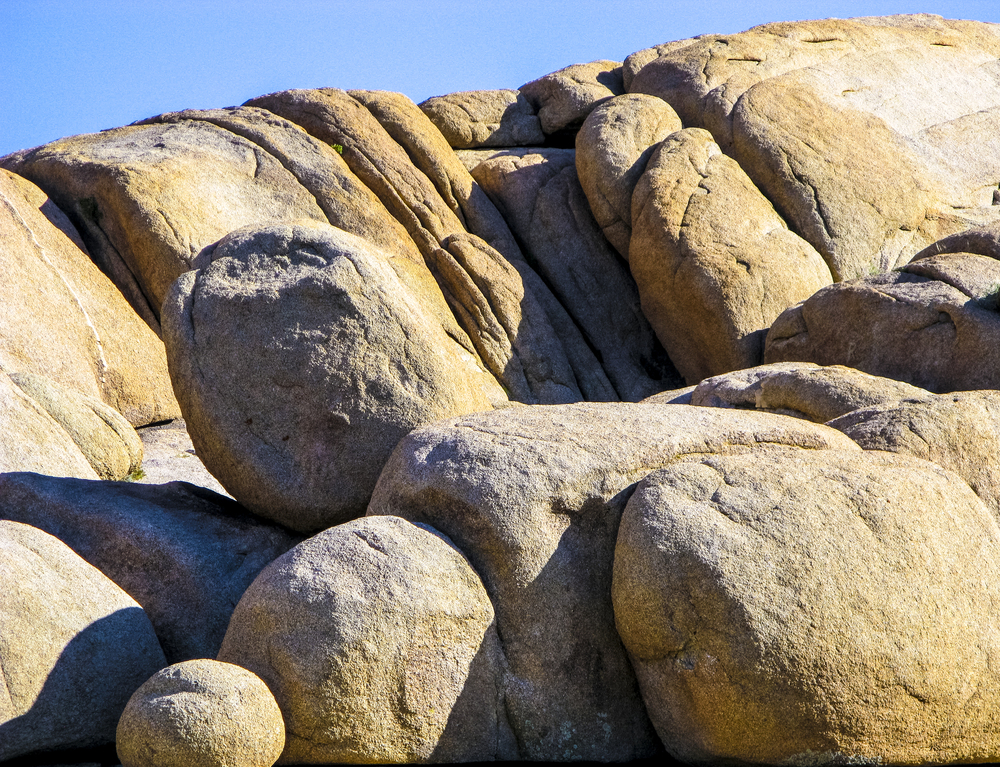
White Lightning sits prominently in the Jumbo Rocks area and serves as many climbers’ first taste of Joshua Tree’s distinctive granite. This 5.7 route follows a crack system that’s wide enough for comfortable hand placements—perfect for learning basic crack climbing without the intimidation factor. At roughly 80 feet long, it offers solid gear placements throughout, so you won’t spend time wondering whether your protection will actually hold. The approach is mercifully short from the parking area, letting you focus entirely on the climbing rather than navigation through desert terrain.
Intersection Rock
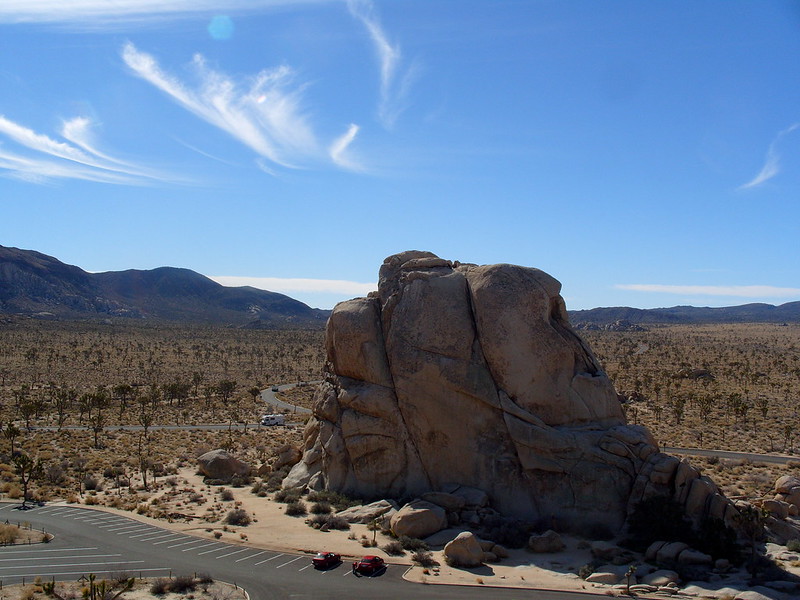
Right along Park Boulevard, Intersection Rock delivers several beginner-friendly routes in one convenient package. The North Face stands out as the most popular choice for newcomers—a 5.6 climb that follows natural weaknesses in the rock formation. This route teaches you how to read granite features while finding the most efficient path upward, though it never feels overwhelming. Rock quality is exceptional, and protection opportunities come frequently enough that you’ll feel secure while learning. Since it’s visible from the road, you’ll often encounter other climbers who can offer advice or encouragement.
Old Woman Rock
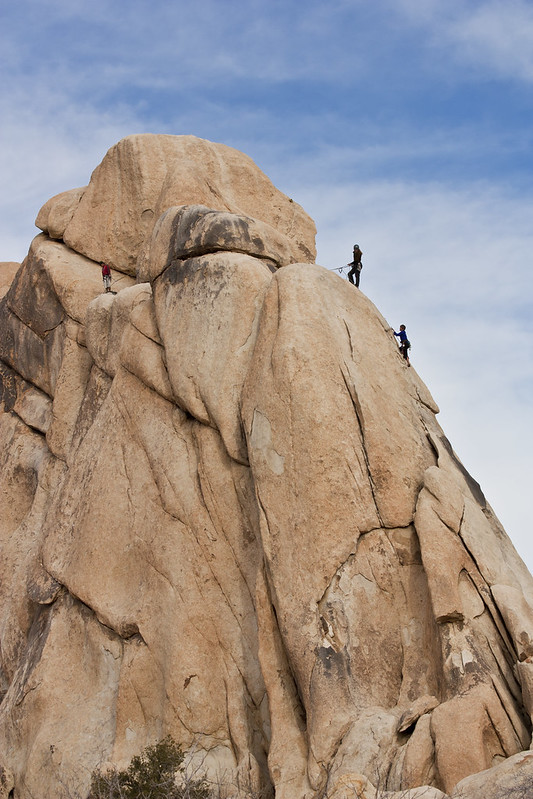
Old Woman Rock features some of the park’s most classic beginner routes, particularly ‘Double Cross’—a 5.7 climb that blends face climbing with basic crack techniques beautifully. This route provides a well-rounded introduction to Joshua Tree’s climbing style while remaining well-protected throughout. The line up the formation is obvious, so route-finding won’t become a concern that distracts from your climbing. Rock texture here provides excellent friction, which means your feet will stick better than you might expect from granite. Located in the accessible Jumbo Rocks area, it’s perfect for morning or afternoon sessions.
Grain Surgery
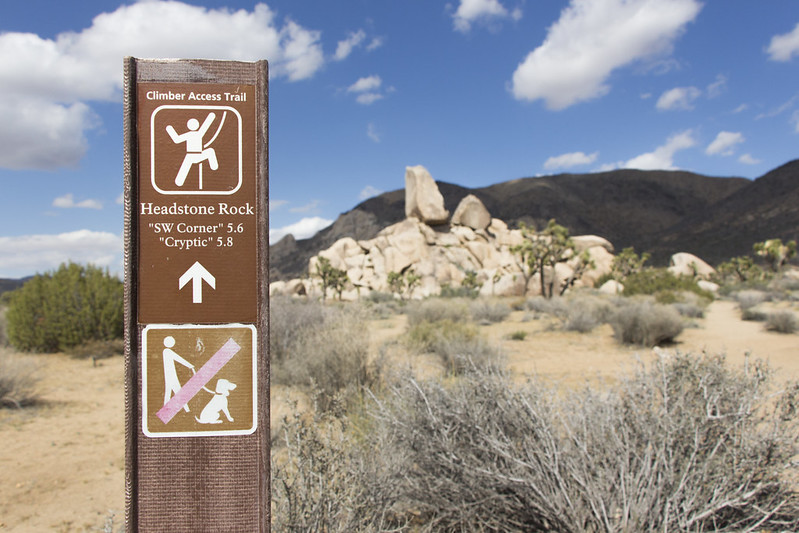
Though Grain Surgery clocks in at 5.8—which might sound intimidating—it’s actually quite manageable for climbers with some gym experience under their belts. The route follows a shallow corner system that provides both hand and foot placements in logical sequences, never leaving you guessing about the next move. What makes this route special is how it teaches you to combine different techniques seamlessly—you’ll use face holds, small cracks, and friction moves all within the same pitch. Protection remains solid throughout, and the approach won’t wear you out before you even start climbing.
Saddle Rock
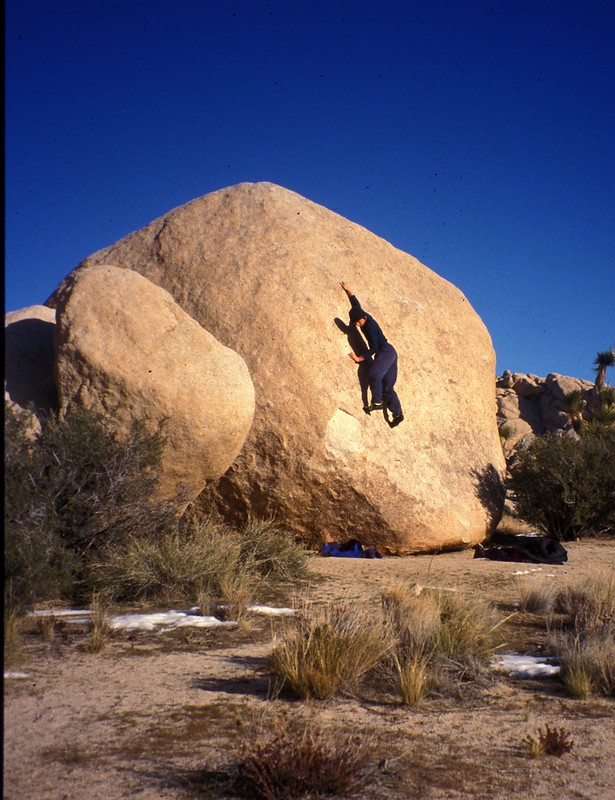
Saddle Rock offers a perfect introduction to slab climbing—a fundamental skill that’ll serve you well throughout Joshua Tree. The route ‘Gram Traverse’ is a 5.6 climb that follows a natural weakness across the face, teaching you how to trust your feet on granite while using friction effectively. Holds are positive enough that you won’t feel like you’re sliding off, yet subtle enough that you’ll develop proper footwork technique. The setting is genuinely beautiful, with sweeping views across the desert landscape that make this climb as much about the experience as the movement itself.
Cyclops Rock
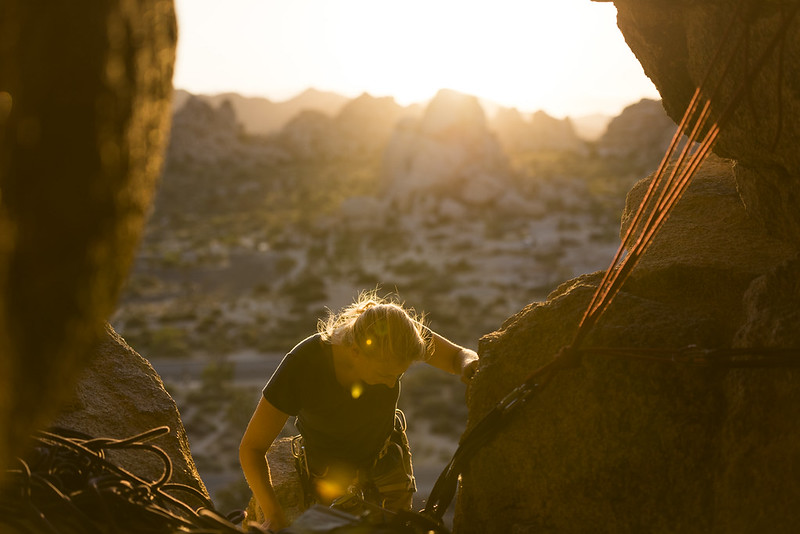
Cyclops Rock features ‘Cyclops’—a 5.7 route that’s ideal for climbers wanting to try their first multi-pitch experience without jumping into the deep end. At only two pitches long, it remains manageable for beginners while still providing that authentic multi-pitch feel that longer routes demand. Each pitch is well-protected and follows obvious features, so you won’t get lost trying to decipher the route. The belaying ledge between pitches is comfortable and secure, giving you a chance to rest while taking in the surroundings—an excellent stepping stone to longer, more committing climbs.
Twilight Zone

The Twilight Zone area contains numerous beginner-friendly routes, with ‘Deviate’ standing out as an excellent 5.8 option for those ready to push their limits slightly. This route follows a clean crack system that’s perfectly sized for learning traditional climbing techniques without much frustration. The crack provides consistent sizing for hand placements, and the route offers enough variety to stay interesting without becoming overwhelming. Rock quality is exceptional, and the route finishes on a large ledge where you can relax while enjoying desert views—the area typically has good shade during warmer parts of the day.
Hemingway Buttress
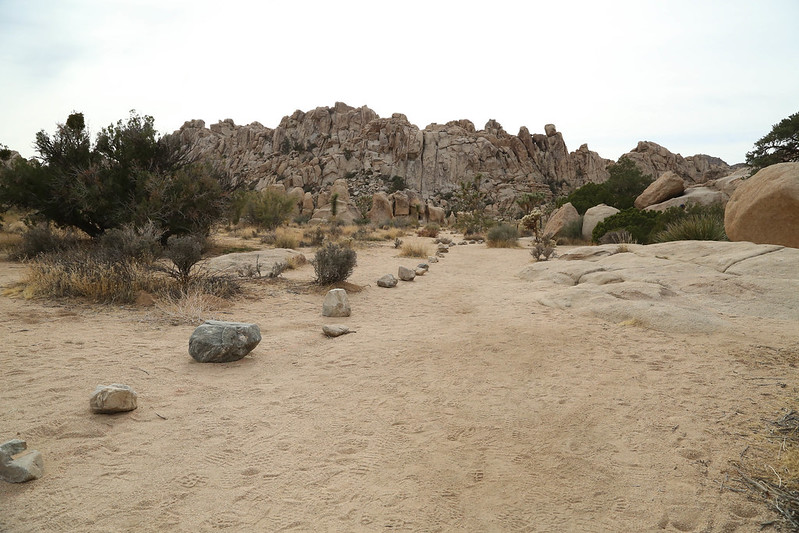
Hemingway Buttress offers ‘Equinox’—a 5.7 route that combines moderate difficulty with exceptional rock quality in a way that feels almost choreographed. The route follows a series of edges and small cracks that teach efficient granite climbing, with each move flowing logically into the next. It feels like solving a puzzle as you climb, though never so complex that you’ll get stuck. Protection opportunities are frequent, and gear placements are obvious enough that you won’t struggle with traditional climbing techniques while the route finishes with spectacular views of the surrounding desert landscape.
Patagonia Pile
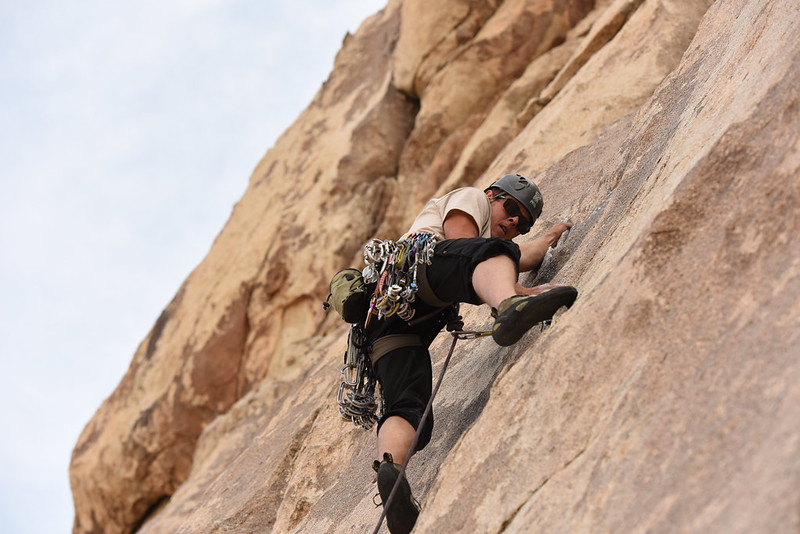
Patagonia Pile features several routes suitable for beginners, including ‘Papillon’ at 5.7—a route that offers a solid introduction to face climbing on Joshua Tree granite. Holds are positive enough to inspire confidence while teaching you to read the rock’s natural features. The route follows a natural line up the formation, making route-finding straightforward rather than a guessing game. Rock texture provides excellent friction for your feet, and protection placements are intuitive for climbers learning to place their own gear—the approach is short and well-defined, maximizing your time on the rock.
Stirrup Rock
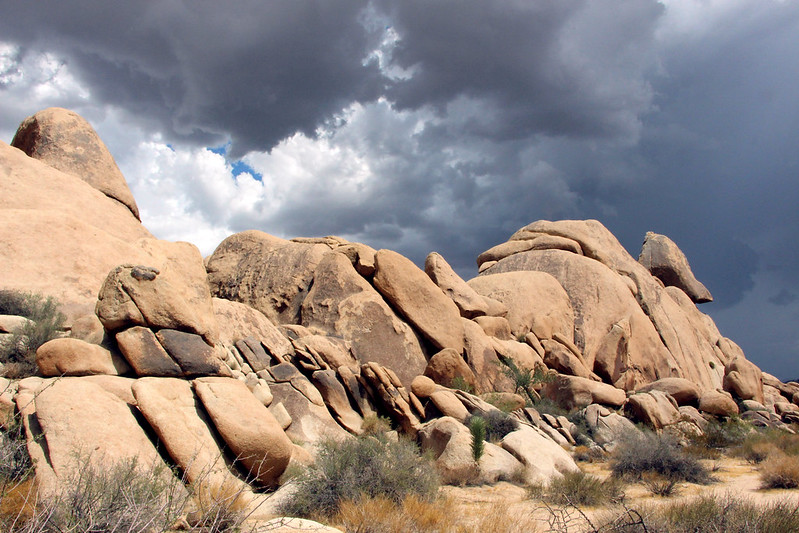
Stirrup Rock’s ‘Stirrup’ route is a 5.8 climb that’s perfect for gaining confidence on Joshua Tree granite while learning fundamental crack climbing skills. The route follows a moderate crack system that’s forgiving enough for beginners yet engaging enough to maintain interest throughout. Crack width remains consistent, making it easier to develop rhythm and practice technique without constantly adjusting your approach—protection opportunities are excellent throughout, and rock quality is solid and reliable. The setting provides good views of the surrounding area while maintaining a straightforward approach from the parking area.
Turtle Rock
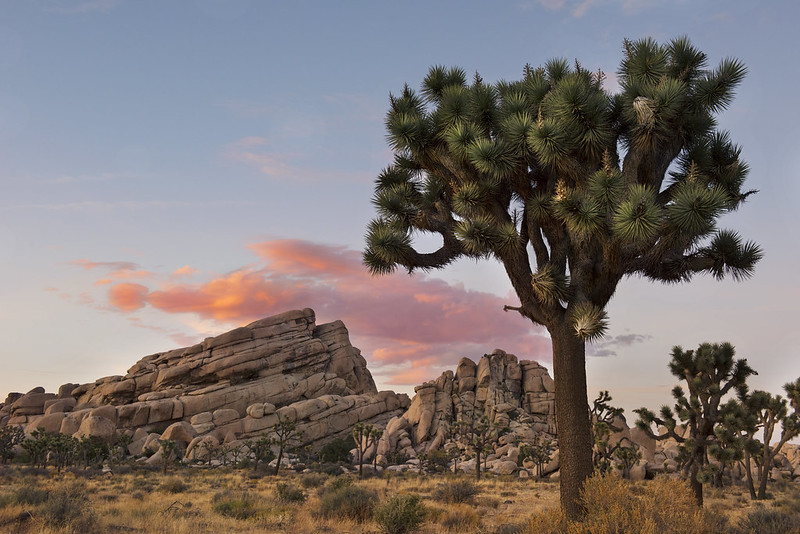
Turtle Rock offers ‘Turtle Soup,’ a 5.8 route that provides excellent introduction to longer single-pitch climbs without overwhelming beginners. The route follows a combination of cracks and face holds, giving you experience with different climbing techniques in one comprehensive pitch. Protection is solid throughout, and the route has enough variety to keep you engaged from bottom to top while never becoming too complex. Rock quality is excellent, with good friction and positive holds where you need them most. The approach is moderate, and the area typically maintains good conditions throughout the climbing season.
Skull Rock
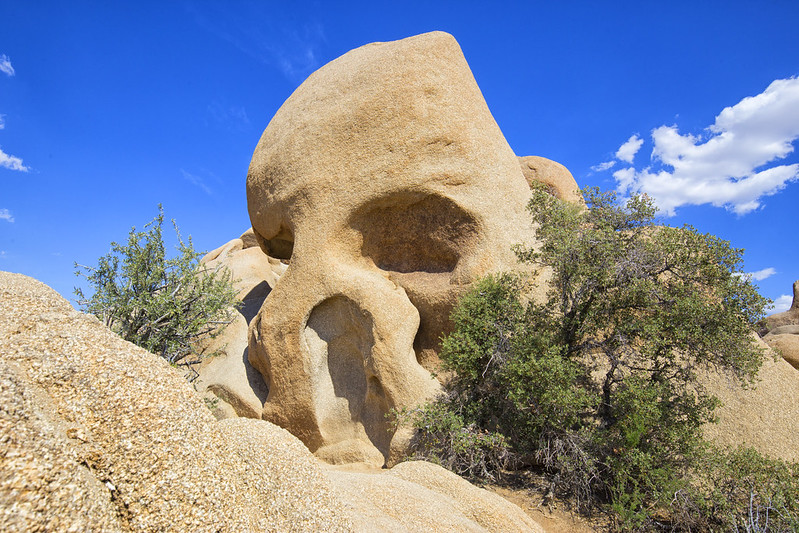
Skull Rock is famous for its distinctive appearance, but it also offers excellent beginner climbing with routes like ‘Skull Queen’ at 5.7. This route follows a natural weakness in the formation and provides a solid introduction to reading granite features effectively. Holds are positive enough to inspire confidence, and protection opportunities are frequent enough to keep you feeling secure. The route has beautiful exposure without being intimidating, offering great views of the desert landscape while maintaining accessibility. The approach is very short, making it perfect for quick climbing sessions or when you want to maximize your time on the rock.
Jumbo Rocks
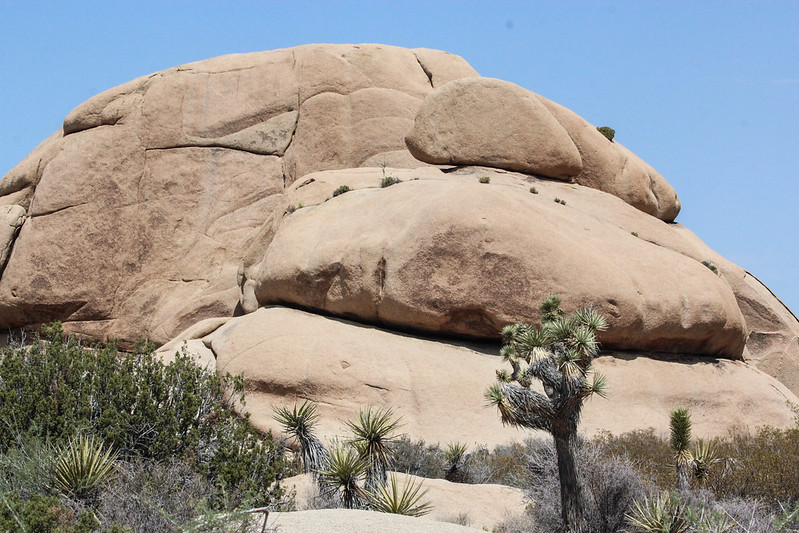
The Jumbo Rocks area contains numerous beginner-friendly options, including ‘Imaginary Voyage’ at 5.7. This route offers a perfect introduction to Joshua Tree’s classic granite climbing style while remaining accessible to newer climbers. The route follows natural features in the rock, teaching you how to read granite and find the most efficient path upward without overwhelming complexity. Protection is solid throughout, and the route has enough variety to be engaging without being overwhelming for beginners. The area is easily accessible and typically maintains good conditions throughout the climbing season.
Split Rock
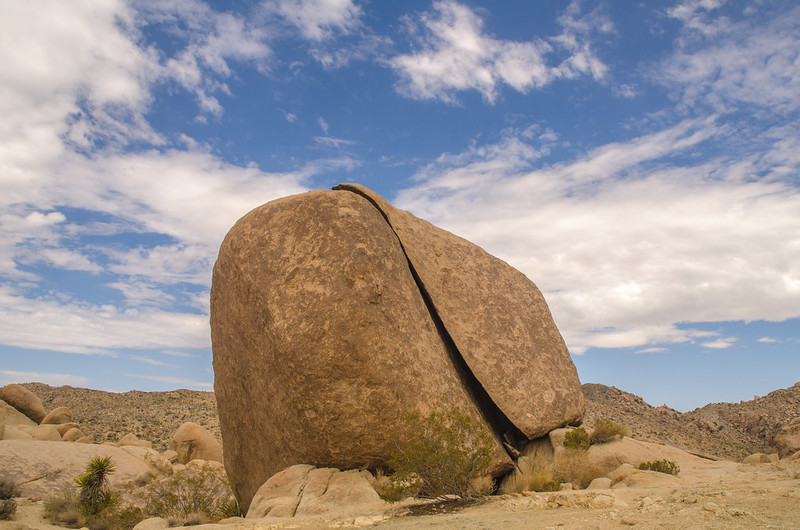
Split Rock offers ‘Right On’ at 5.7, a route that’s perfect for climbers wanting to practice their crack climbing skills in a supportive environment. The route follows a clean crack system that’s well-sized for learning proper technique while building confidence. The crack provides both hand and foot placements, making it easier to develop a climbing rhythm while progressing up the route. Protection opportunities are excellent, and the route has a moderate approach that won’t tire you out before you start climbing. Rock quality is exceptional, and the route finishes with good views of the surrounding desert landscape.
Cholla Cactus Garden
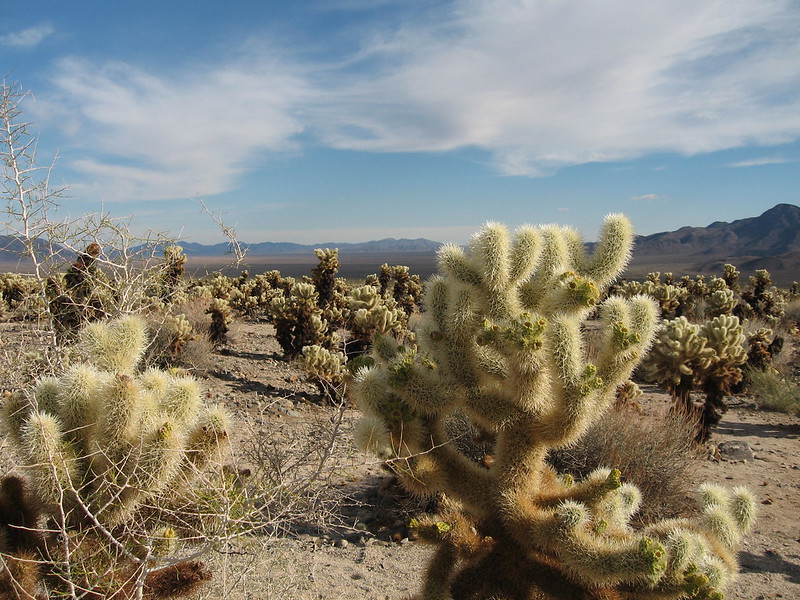
Near the Cholla Cactus Garden, you’ll find ‘Cholla Direct’ at 5.6, a route that offers a gentler introduction to Joshua Tree climbing while still providing a genuine challenge. The route follows a series of natural holds and small cracks that are perfect for building confidence without intimidation. Holds are positive enough that you won’t feel insecure, but challenging enough to be engaging and educational. Protection is solid throughout, and the route has beautiful desert views that remind you why people fall in love with this place. The approach is short and well-marked, making it easy to find and perfect for relaxed climbing sessions.
Where Desert Dreams Take Root
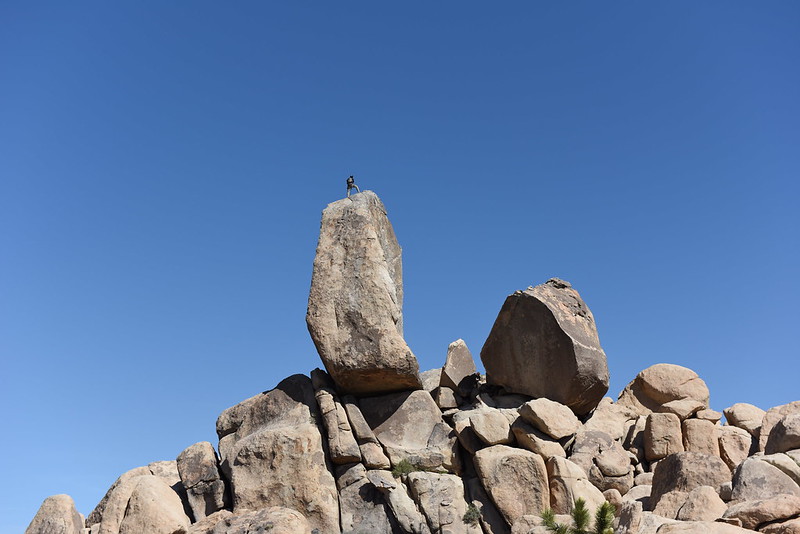
These routes represent just a fraction of what Joshua Tree offers beginning climbers, yet they provide an excellent foundation for developing skills and confidence on granite. Each route teaches different aspects of desert climbing, from basic crack techniques to face climbing and route-finding skills that’ll serve you well beyond this park. The desert environment adds another dimension to the climbing experience, connecting you with a landscape that’s both harsh and beautiful in ways that indoor climbing simply can’t replicate. As you progress through these routes, you’ll develop the skills and confidence needed to tackle more challenging objectives throughout the park and beyond.
More from Travel Pug

- 20 Best Beach Towns in the Carolinas
- 13 Destinations Where Tourists Regularly Regret Their Trip
- 20 Things You Actually Get in First Class
- 20 Small Airports With Aviation Museums
- 20 Places in the U.S. That Are Perfect for a Reset Trip
Like Travel Pug’s content? Follow us on MSN.
